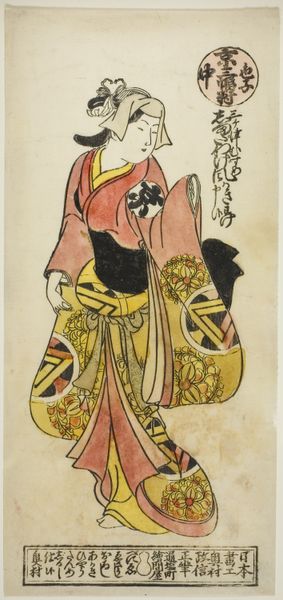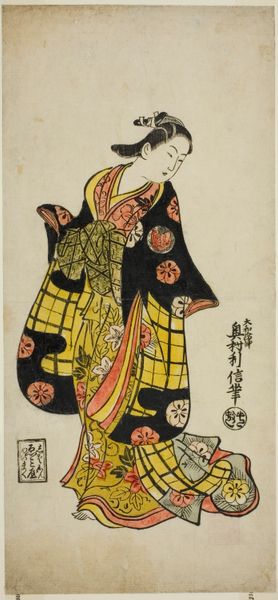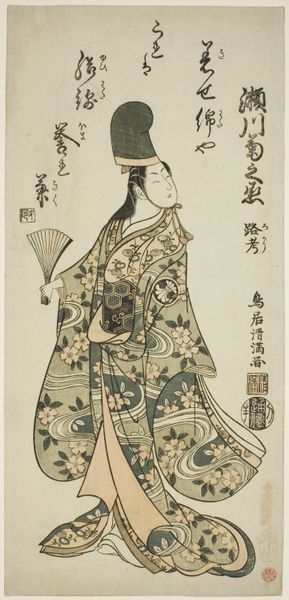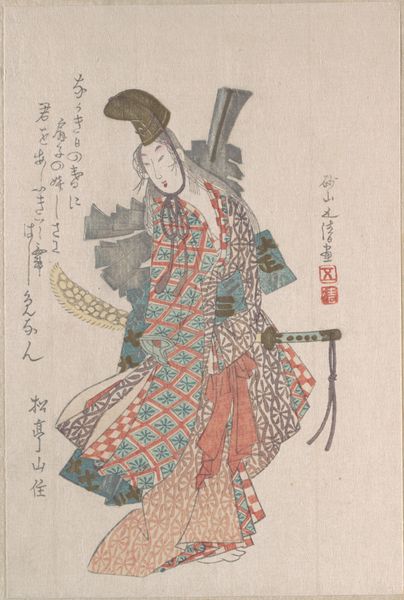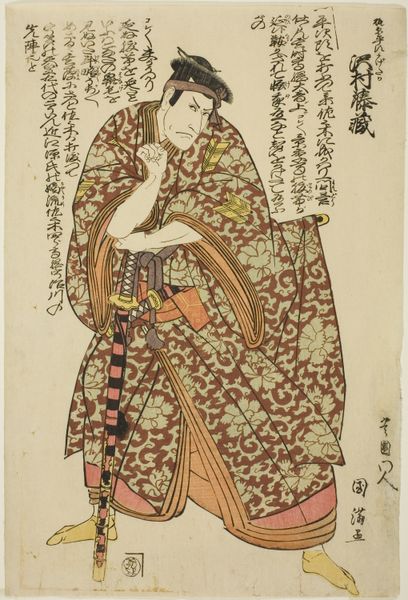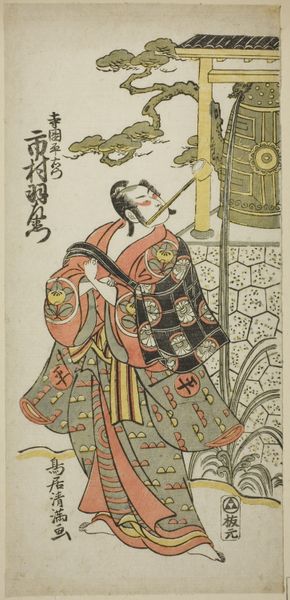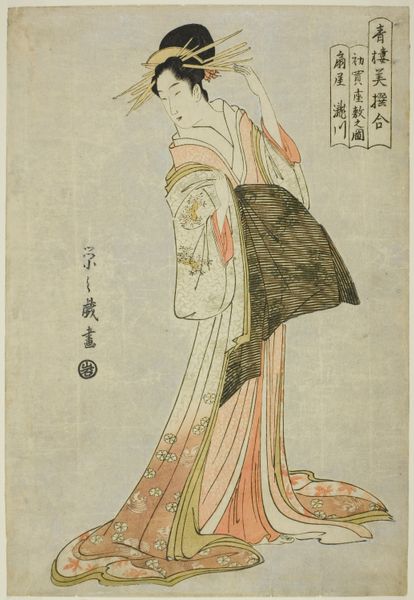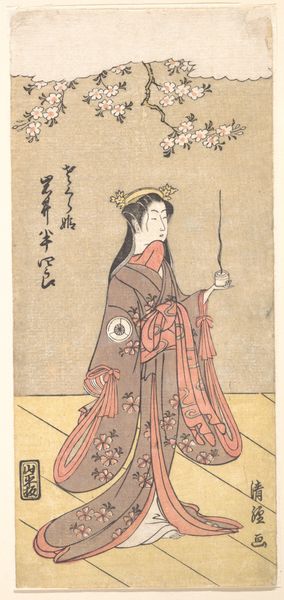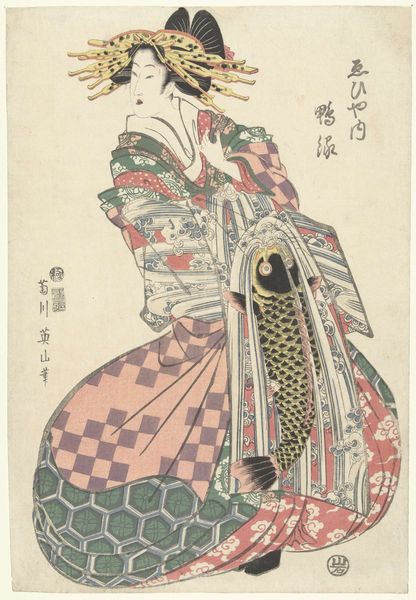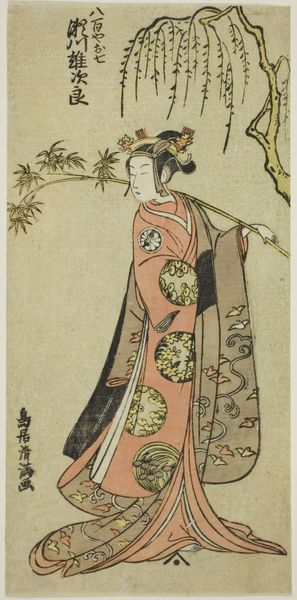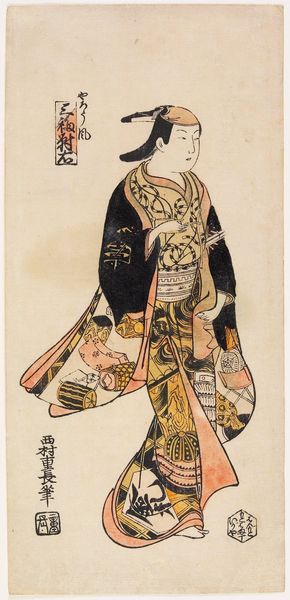
#
childish illustration
#
cartoon like
#
cartoon based
# print
#
asian-art
#
caricature
#
junji ito style
#
japan
#
cartoon sketch
#
tattoo art
#
watercolour illustration
#
cartoon style
#
cartoon carciture
Dimensions: 13 1/4 × 6 1/8 in.
Copyright: Public Domain
Curator: Well, I'm immediately struck by the delicacy of line and the subtle color palette. It’s such a quiet, introspective piece. Editor: Let's delve into this. The work before us is a print titled "The Actor Anegawa Chiyosaburo from Kyoto," created by Nishimura Shigenobu in 1734. This piece, now residing at The Art Institute of Chicago, provides a window into the popular culture and performative arts of Edo-period Japan. Curator: You know, seeing how it portrays a male actor posing as a woman makes me think about gender fluidity in art forms across history, like the use of castrati in opera for example, and how such conventions challenged social norms. Were these roles subversive, or just theatrical convention? Editor: The representation of male actors in female roles, or "onnagata," was indeed a significant aspect of Kabuki theater, shaped by social decrees which prevented women from performing. Looking at Shigenobu's print within that historical context, the "onnagata" became highly stylized cultural figures, both celebrated and subject to particular moral scrutiny. It raises some crucial questions regarding censorship, class structure, and the artistic space actors were afforded within that time. Curator: It makes me wonder too, how does this portrayal of a "feminine" male character reinforce or undermine then-existing perceptions of gender, both onstage and off? Was this kind of popular art used as commentary, to challenge restrictive roles in the society? Editor: That’s the interesting contradiction: the onnagata embodied an idealized femininity, intensely crafted, that sometimes both echoed and transcended the limited roles women occupied outside of the theater. The reception of the figure by diverse audiences definitely sparked debate and occasionally threatened the established order of society. Considering the role that Kabuki played for diverse socio-economic groups allows us a better view of Edo Japan itself, wouldn't you agree? Curator: Absolutely. By juxtaposing the artistry of Kabuki with rigid gender constructs, this print becomes far more than a simple portrait, acting as a point for departure when looking into performativity and cultural anxieties present in eighteenth-century Japan. Editor: Indeed. Looking at "The Actor Anegawa Chiyosaburo from Kyoto," allows for dialogue about cultural perception that existed three centuries prior; something that continues to inspire debate in our current day.
Comments
No comments
Be the first to comment and join the conversation on the ultimate creative platform.
